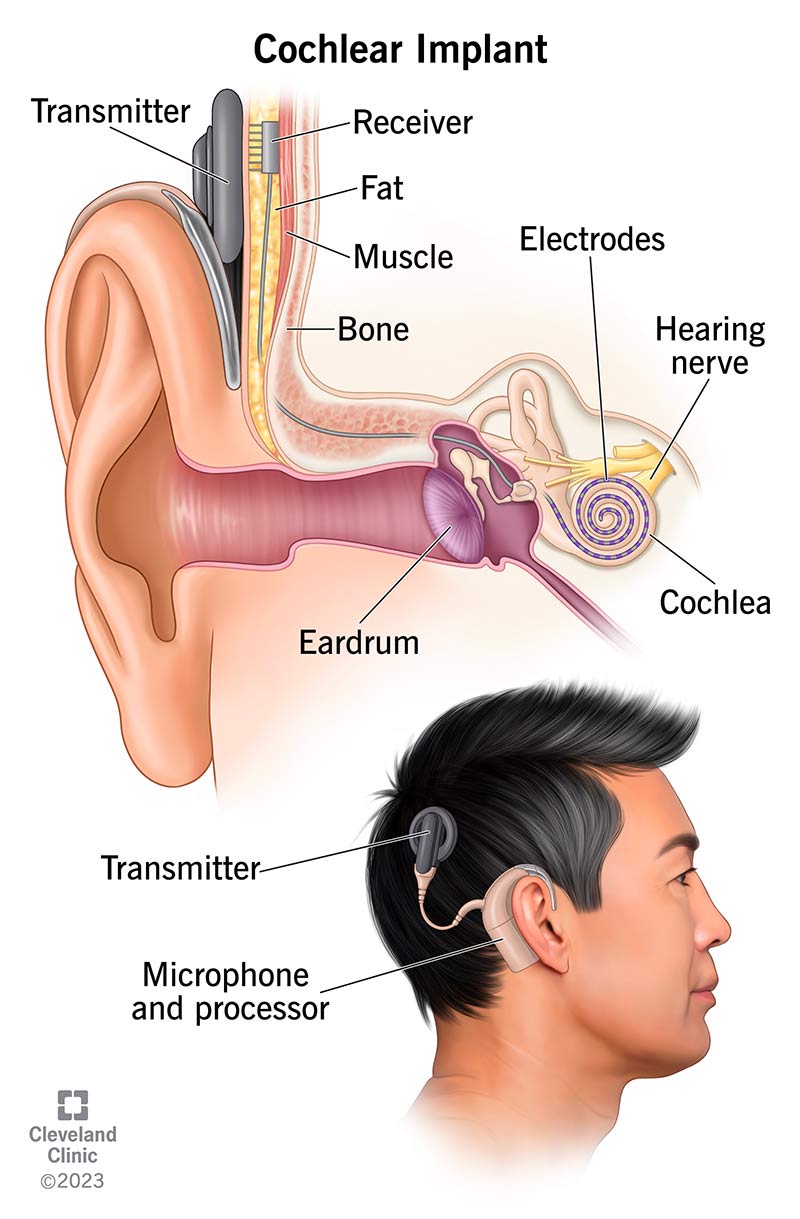The decision to undergo cochlear implant surgery is a life-changing one, offering the potential for significant improvements in hearing and communication abilities for individuals with severe to profound sensorineural hearing loss. This complex procedure, which involves the surgical implantation of a medical device designed to bypass damaged portions of the ear and directly stimulate the auditory nerve, can have a profound impact on an individual’s quality of life. However, the journey to successful cochlear implantation involves careful consideration, thorough preparation, and a comprehensive understanding of the process and its aftermath.
Understanding Cochlear Implants
At the heart of cochlear implant technology is a sophisticated device that consists of two main components: an external sound processor and an internal implant. The external sound processor captures sound from the environment, converts it into electrical signals, and transmits these signals to the internal implant. The internal implant, which is surgically placed under the skin behind the ear, receives these electrical signals and uses them to stimulate the auditory nerve directly, bypassing damaged hair cells in the cochlea. This direct stimulation allows the brain to interpret the signals as sound, providing the sensation of hearing to individuals who may not have benefited from traditional hearing aids due to the severity of their hearing loss.
Pre-Surgical Preparation
The path to cochlear implantation begins with a thorough evaluation by an interdisciplinary team of audiologists, otolaryngologists (ear, nose, and throat specialists), and other healthcare professionals. This evaluation process is designed to assess the individual’s hearing loss, the integrity of the auditory nerve, and the overall health of the potential candidate to ensure that cochlear implantation is the most appropriate treatment option. Key components of the pre-surgical evaluation include:
- Comprehensive Audiological Testing: Detailed hearing assessments to determine the extent and nature of the hearing loss.
- Imaging Studies: CT or MRI scans to evaluate the structure of the inner ear and the auditory nerve.
- Medical Evaluation: Assessment of the individual’s overall health to identify any potential risks or complications associated with surgery.
The Surgery
Cochlear implant surgery is typically performed under general anesthesia and lasts several hours. The surgery involves several key steps, including:
- Incision and Access: The surgeon makes an incision behind the ear and creates a recess in the bone to accommodate the internal device.
- Cochleostomy: A small opening is made in the cochlea to insert the electrode array.
- Electrode Array Insertion: The electrode array is carefully inserted into the cochlea.
- Device Placement: The internal device is secured in its designated place under the skin.
- Closure: The incision is closed, and the external sound processor is not attached until the healing process is complete.
Post-Surgical Recovery and Rehabilitation
The recovery period following cochlear implant surgery is crucial, with most individuals experiencing some discomfort, swelling, and temporary changes in taste or balance. It is essential to follow the post-operative instructions provided by the healthcare team to ensure proper healing and minimize the risk of complications.
After the initial healing period, typically a few weeks, the external sound processor is fitted and activated. This is a significant step, as it marks the beginning of the auditory rehabilitation process. Auditory rehabilitation involves a series of appointments with an audiologist, who adjusts the sound processor settings to optimize sound perception and works with the individual to develop listening and communication skills. This process can be intensive, requiring frequent visits and practice at home, but it is critical for achieving the best possible outcomes from the cochlear implant.
Success Strategies
Achieving success with a cochlear implant involves a combination of the right medical treatment, supportive rehabilitation, and personal commitment. Some strategies for maximizing the benefits of cochlear implantation include:
- Active Participation in Rehabilitation: Engaging fully with the auditory rehabilitation process, including regular appointments and home practice exercises.
- Setting Realistic Expectations: Understanding that the adjustment to a cochlear implant takes time and that outcomes can vary among individuals.
- Staying Connected: Building a support network of family, friends, and support groups to navigate the journey with cochlear implants.
- Ongoing Learning: Continuing to learn about cochlear implant technology, advances in the field, and strategies for optimizing device performance.
Future Developments and Advances
The field of cochlear implantation is continuously evolving, with ongoing research aimed at improving device technology, surgical techniques, and rehabilitation strategies. Advances such as the development of more sophisticated sound processing algorithms, smaller and more discreet devices, and novel approaches to preserving residual hearing are transforming the landscape of auditory rehabilitation. Furthermore, the integration of cochlear implants with other technologies, such as hearing aids and brain-computer interfaces, is opening up new possibilities for restoring hearing and communication abilities in individuals with hearing loss.
Frequently Asked Questions
What are the risks and complications associated with cochlear implant surgery?
+While generally considered safe, cochlear implant surgery carries potential risks and complications, including infection, facial nerve paralysis, and device failure. Thorough discussion with a healthcare provider can help understand these risks and how they are mitigated.
Can adults benefit from cochlear implants as much as children?
+Yes, adults can significantly benefit from cochlear implants. While the brain's plasticity in children allows for more rapid adaptation, adults can also achieve substantial improvements in hearing and communication, especially when supported by comprehensive rehabilitation services.
How long does it take to recover from cochlear implant surgery?
+The initial healing process typically takes a few weeks, after which the external sound processor is activated. Full recovery and adjustment to the implant, including achieving optimal performance, can take several months to a year or more, depending on individual factors and the effectiveness of the rehabilitation process.
Can cochlear implants restore 'normal' hearing?
+Cochlear implants do not restore 'normal' hearing in the conventional sense but can provide a sense of sound to a person who is profoundly deaf or severely hard-of-hearing. The sound produced is different from natural hearing, and the degree of benefit varies among individuals, with some achieving near-normal communication abilities in optimal environments.
Are cochlear implants covered by insurance?
+Coverage for cochlear implants varies by insurance provider and the specific circumstances of the individual. Most major insurance companies, including Medicare, cover cochlear implantation for approved candidates, considering it a medically necessary procedure for treating severe to profound sensorineural hearing loss.
Can I use my cochlear implant in water?
+The internal component of the cochlear implant is designed to be water-resistant and can withstand normal exposure to moisture. However, submerging the head in water (such as when swimming) requires additional protective measures to prevent water from entering the surgical site. There are accessories available, such as waterproof cases or pouches, that can allow for swimming and bathing with the external sound processor.
In conclusion, cochlear implant surgery offers a powerful tool for restoring hearing and improving communication abilities in individuals with severe to profound hearing loss. With careful evaluation, thorough preparation, and a commitment to the rehabilitation process, individuals can maximize the benefits of this technology and significantly enhance their quality of life. As research and development continue to advance the field, the potential for cochlear implants to transform lives will only continue to grow.


